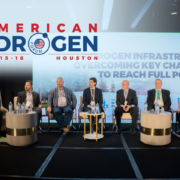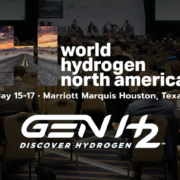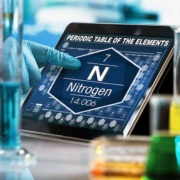Clean Hydrogen Roadmap Takeaways
By: GenH2 Staff
Read Time: 3 minutes
Last June, The U.S. National Clean Hydrogen Strategy and Roadmap was announced as a first-of-its-kind nationwide plan to build a hydrogen-powered future. Developed by the United States Department of Energy (DOE), this roadmap shows the steps needed for net zero and outlines national actions and targets that will help reach them. The roadmap can also be used as a reference point to make sure national goals are met at projected times, with updated roadmap versions to be published every three years.
Specific national goals include plans to make our national power grid completely carbon-free by 2035. By 2050, the goal is to have the entire country become net-zero in all areas, eliminating greenhouse gas emissions. This will involve mass integration of hydrogen infrastructure across private and public sectors to help transition hydrogen as an alternative energy carrier. To meet these ambitious goals, key strategies to speed up hydrogen infrastructure rollout were announced.
The are three key strategies highlighted in the Clean Hydrogen Roadmap, with each playing an important role on the road to net-zero. The first strategy is to target strategic, high-impact industries to switch to hydrogen and produce 5 MMT of clean hydrogen per year by 2030. These industries include the Industrial, Transport, and Power sectors, which are currently among the highest carbon-emitters. The next goal is to reduce the cost of clean hydrogen, which relies on stimulating private sector investments, spurring development for critical materials across the hydrogen supply chain, and dramatically reducing the cost of hydrogen production and transportation. Advancements in hydrogen production will be aided using grants and tax credits, such as the ones listed in the Inflation Reduction Act (IRA). The third strategy is to focus on regional networks, such as hydrogen hubs, to better meet expected demand. Current plans show several possible areas for regional hub networks spanning across several states with high priority hydrogen users. The strategic placement of these hubs would allow sharing of mass infrastructure which will inevitably speed up hydrogen’s time to market.
Following the strategies, eight guiding principles were listed and will be followed by government agencies as they carry out the goals mentioned in the roadmap. These eight core principles are listed below:
- Grow quality jobs
- Foster diversity, equity, inclusion, and accessibility
- Advance energy and environmental justice
- Enable affordability and versatility
- Approach holistically
- Spur domestic manufacturing and robust supply chains
- Catalyze innovation and investment
- Enable deep decarbonization through strategic, high-impact uses
In addition, the national actions section mentioned plans to decarbonize areas of the market with few or no alternatives to hydrogen. The next target would be markets where clean hydrogen can help expand the economy. The final goal is for competitiveness to rise in all areas as prices continue to lower and infrastructure spreads. These actions, combined with the ongoing advancement of hydrogen technology, show an optimistic outlook for green hydrogen’s future role in every aspect of our economy.
Ultimately, this roadmap serves as a feasible plan and guide to becoming carbon-neutral in the coming decades. Reaching the ambitious goal of net-zero by 2050 will be essential in mitigating carbon emissions while building infrastructure for clean and renewable energy across the United States. Hydrogen will play a key role in achieving this goal and will provide us with a renewable source of clean energy for a brighter future.
GenH2’s mission is to create infrastructure solutions for the liquid hydrogen value chain, focusing on the liquefaction, storage, and transfer of hydrogen and to accelerate widescale infrastructure rollout including the development of systems that will help achieve the goals of this roadmap. To learn more about how GenH2 supports the expansion of the hydrogen economy, see our blog post on Light-Scale Liquefaction!











